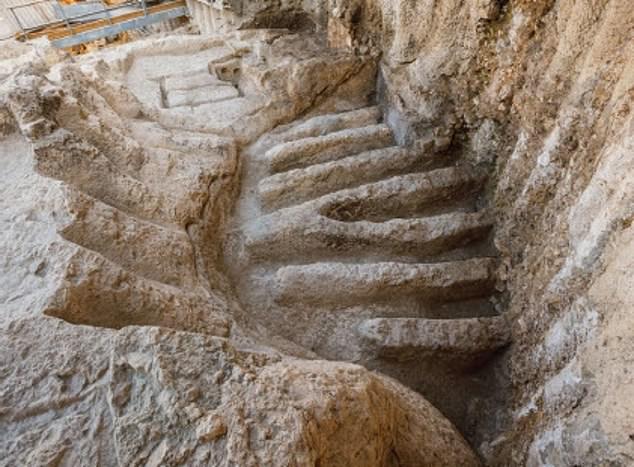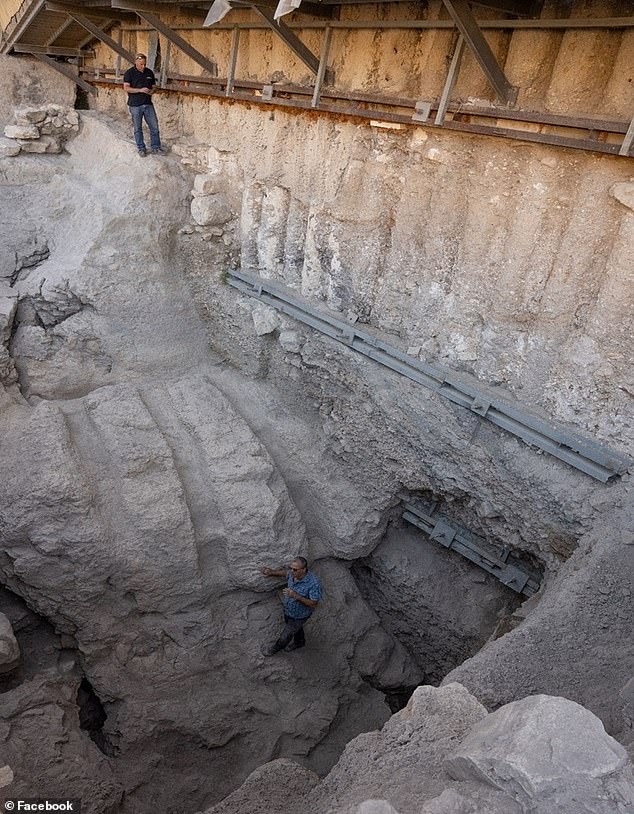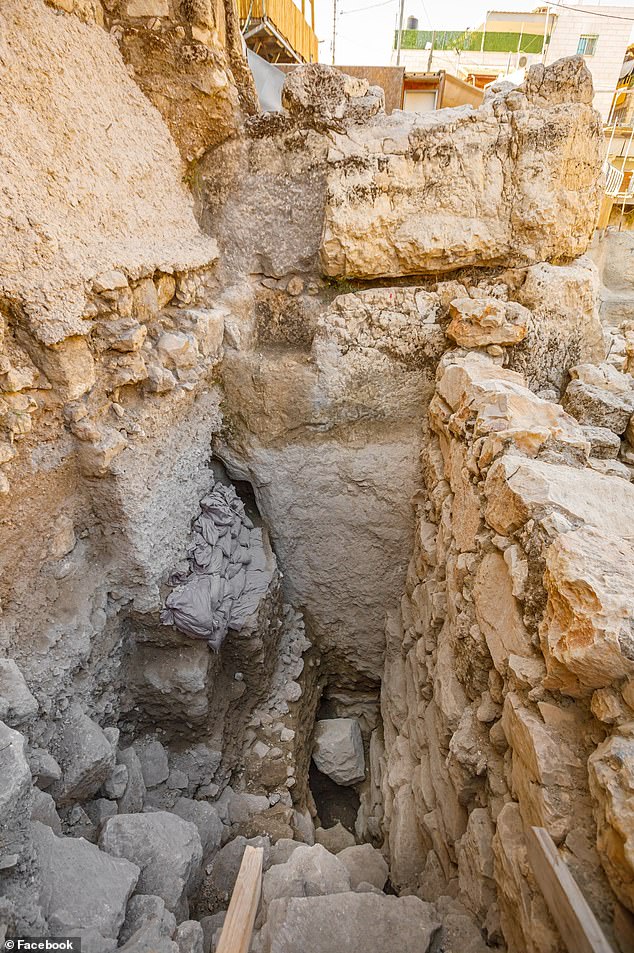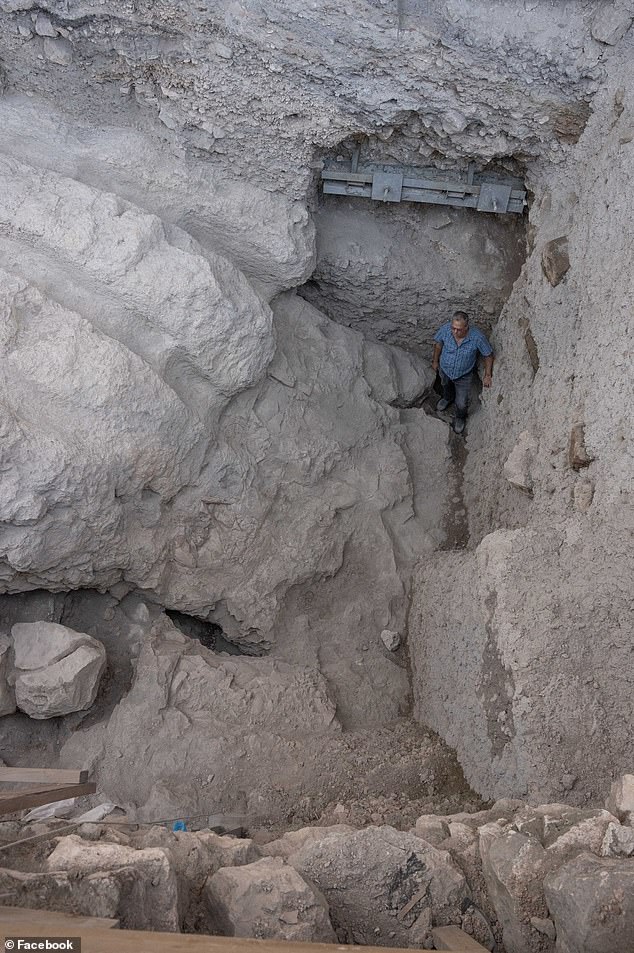Archaeologists discover ‘monumental’ 3,000-year-old structure in Israel that confirms Bible stories
Archaeologists have discovered a ‘monumental’ building: Jerusalem. It is mentioned in two books of the Bible.
They discovered the ruins of an old moat that had been built more than 3000 years ago in the City of David, which is considered one of the oldest cities in history and is believed to be the birthplace of Jesus.
For 150 years, researchers have been trying to prove that the city was split in two, as described in the Bible. Now they have uncovered the moat that separated the southern residential area from the upper city in the north.
The moat was about 30 feet deep and almost 100 feet wide, with perpendicular cliffs on either side that made the moat impassable.
The City of David, once called Bethlehem, is considered one of the oldest cities in history and is said to be the birthplace of Jesus

The moat was about 30 feet deep and nearly 100 feet wide, with perpendicular cliffs on either side, making it impassable
According to the team, the findings confirm that the moat was built in the Iron Age, the same period when the Book of Kings and the Book of Samuel were written to describe how the City of David was split into Ophel and Millo.
“This is a dramatic discovery that has renewed discussion about terms in biblical literature that refer to the topography of Jerusalem, such as the Ophel and the Millo,” said researchers from the Israel Antiquities Association (IAA).
Ophel and Millo are terms used in Scripture to describe different parts of the City of David.
One reference is found in the First Book of Kings (11:27), where King Solomon is described as the one who built the structure, which was given the name ‘Millo’: ‘… Solomon built the ‘Millo’ and made a breach in the wall of the city of David his father.’
The Old City was the birthplace of Jerusalem and was built by King David to unite Israel around one capital city.
The site was built on a narrow, steep ridge overlooking the hills and valleys that divided the land and made it difficult to travel from one area to another.

The structure was first discovered in the 1960s by British archaeologist Kathleen Kenyon, who noticed that the moat lay slightly east of the present-day Givati Parking Lot. Kenyon thought the formation was simply a natural valley, but her discovery turned out to be a continuation of the moat, as it curved to the west.
“It is not known when the moat was originally dug, but evidence suggests that it was used during the centuries when Jerusalem was the capital of the Kingdom of Judah, nearly 3,000 years ago, beginning with King Josiah,” said Dr. Yiftah Shalev, the director of the excavations.
‘In those years the moat separated the southern residential part of the city from the dominant acropolis to the north; the upper city where the palace and temple were located.’
The IAA confirmed that building plans such as these generally date from the Middle Bronze Age, approximately 3,800 years ago.
“We are convinced that (the moat) was used during the First Temple and Kingdom of Judah (in the ninth century BCE), and that it formed a clear buffer between the residential area to the south and the Upper City to the north,” Dr. Shalev said.

The IAA confirmed that building plans like these generally date from the Middle Bronze Age – around 3,800 years ago

The city was built on a narrow, steep ridge overlooking hills and valleys that divided the land and made it difficult to travel from one area to another
According to the researchers, the moat was intended to change the topography of the City of David, thereby emphasizing the power of Jerusalem’s rulers over others who entered the gates, and the rulers’ strength and ability to defend the walls at the time.
The structure was first discovered in the 1960s by British archaeologist Kathleen Kenyon, who noted that the moat was located slightly east of the current Givati parking lot.
Kenyon thought the formation was merely a natural valley, but her discovery turned out to be a continuation of the canal, curving westward.
“Once again, discoveries are being made that shed new and clear light on biblical literature,” said Eli Escusido, director of the IAA.
‘Standing at the bottom of this gigantic excavation site, surrounded by enormous rock-cut walls, you can’t help but be filled with amazement and appreciation for the ancient peoples who literally moved mountains and hills some 3,800 years ago.’
